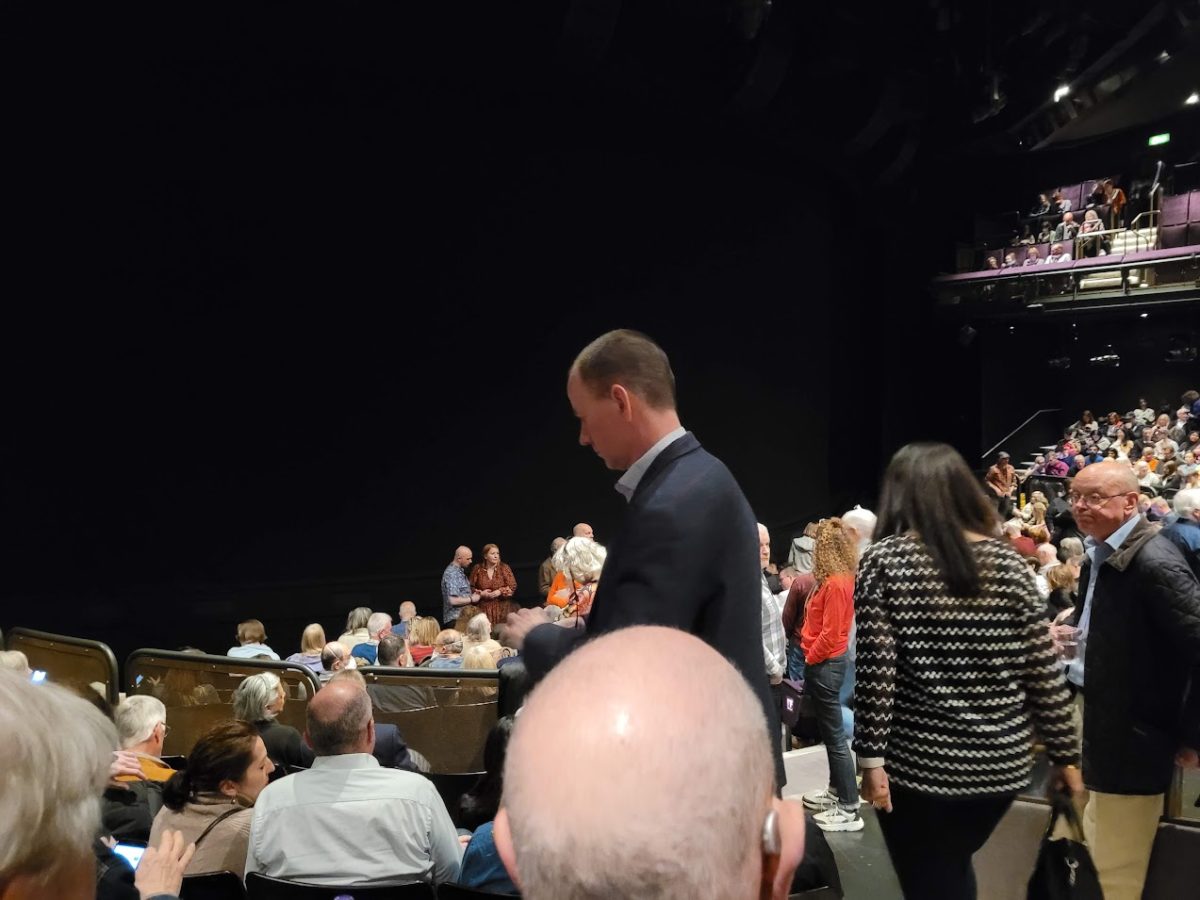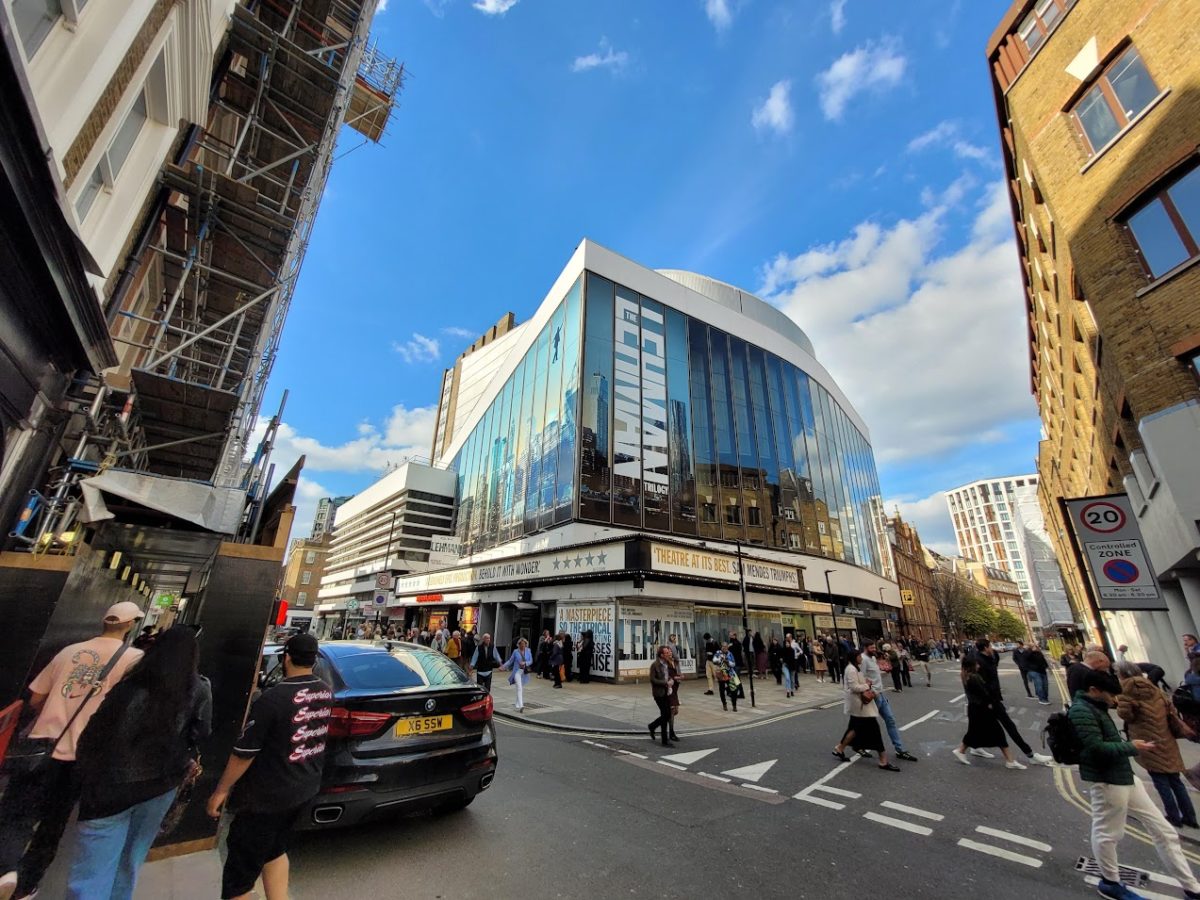Gillian Lynne Theatre, London, hosting Sam Mendes’ The Lehman Trilogy. Image (C)Tim Sandle.
The Lehman Trilogy is a thrilling historical drama playing out to packed audiences in London. The play three generations of the Lehman family using an innovative set-piece and a trio of actors.
All empires fall and all major companies eventually collapse. The growth dynamic cannot continue forever, either because expansion is too great and too fast, because of a tendency towards monopoly, or because a rival emerges with a desire to take the market share of an existing firm. This was seen with the mighty East India Company and it was seen with Lehman Brothers. This latter incident is the subject of a gripping new stage production.
How to tell a story across a period of 170 years, taking into account three different centuries and a period id change? Based on the text by Ben Power this task was executed in an innovative way by director Sam Mendes by using a connected narrative, by having the three lead actors play multiple roles, and by separating the production into three acts.
The three lead actors are Nigel Lindsay, Michael Balogun, and Hadley Fraser, each of whom appears in the tailored three-piece suits women by 19th-century middle class men. Each has a commanding stage presence and as well as applying successive generations of the Lehman family, they skilfully turn their attention to various wives, toddlers, and business partners.
Another innovation was the rotating set, formed of metal and glass and designed to represent a contemporary boardroom.
The play begins in the 1840s with the arrival to New York of the German Jew Hayum Lehmann (or ‘Henry Lehman’ as he became) to the U.S. He takes out a loan and established a dry-goods store, opening in 1844 and specialising in cotton goods. He is soon joined by his two brothers (Emanuel and Mayer) and the company grows, expands, and morphs into the areas of commodities trading and brokerage services and finally into an international investment bank under the leadership of Emanuel’s son, Philip Lehman.
All of this is told through some superb acting, character shifting, building props from storage boxes, and drawing the audience in through real-life tales and dramatic events.

There are ups and downs, with an up being the 1855 relocation of the company to New York and the downs including railroad bankruptcies and the Great Depression, which bridges the second and third acts.
The history of the firm is traced through the brothers and their children and grandchildren, delivered poetically, and reflecting a range of emotions. This familial narrative continues up until 1969 and the death of Robert Lehman (son of Philip), after which there were none of the original family left on the board. The play continues until the collapse of the company in 2008.
There were a number of themes evident throughout the play, from the bonds of family through to the uncomfortable shift that comes with being in tune with the times to being completely out-of-step, which is something that happens to multiple generations of the family.
Another important theme is the development of capitalism, as shown through events and generational change. This begins with more simple mechanisms where physical products are directly sold, through to the concept of the ‘middleman’ – buying in raw materials bulk (in this case cotton) and selling it on for a profit to the factory owner, and finally to the advent of the stock market where there is no physical product being exchanged at all.
As well as revealing the dynamic of capitalism, with the sphere of the wealthy having increasingly little to do with the product, the pay also addresses other themes, most notably slavery.

As hard working as the first generation of Lehman are, their foundling shop was stocked with cotton good from the slave plantations of Alabama.
At the time of its collapse, Lehman was the fourth-largest investment bank in the U.S. with 25,000 employees worldwide. It had $639 billion in assets and $613 billion in liabilities. The firm was eventually brought down by the collapse of the subprime mortgage market, an area the bank had only been involved with for eight years – a tiny amount of time in relation to its illustrious history.
For lovers of dramatic acting and true life events, The Lehman Trilogy makes for a dramatic piece of theatre, across its 3 hours and 20 minutes running time, and it is well worth catching.
The Lehman Trilogy is running at the Gillian Lynne Theatre, London.

